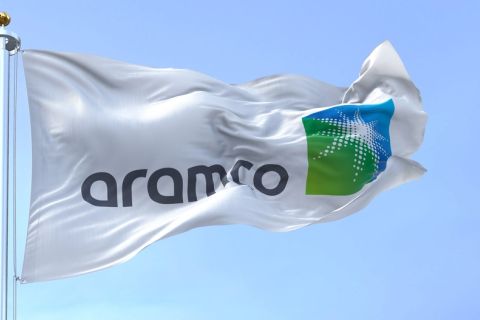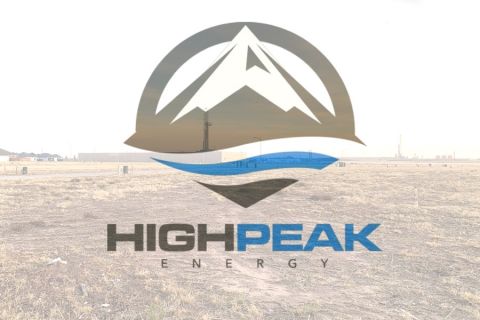Hemisphere Energy is a Canadian oil and gas company focused on increasing oil production and reserves in low-cost and low-risk oil-focused development plays. Its operations are in the Jenner area in southwest Alberta and the Trutch area in northeastern British Columbia (B.C.). The company’s main focus has been on its medium to heavy oil-prone southern Alberta assets at Jenner while maintaining an inventory of liquids-rich natural gas potential for future development in B.C.
Even with a management team that has experience drilling more than 300 horizontal wells, the company is still young and aggressive. It is in what is termed the Canadian Junior space (500 bbl/d to 10,000 bbl/d). Flexible but guarded and with money in the bank, Hemisphere’s constant goal is getting the well onstream as quickly as possible. Its balance sheet has never been in trouble, and it has had to raise only $20 million during its existence.
According to Don Simmons, president and CEO, “Management’s skillset is in taking it from zero to 3,500 boe/d. If it’s anything greater than that, and it takes the creation of many more teams within an organization, it’s not our cup of tea.”
Greener pastures?
Oil and gas development in southern Alberta is not new. The first oil wells in Canada were drilled in the 1930s. Many companies have come and gone. Over the past 10 years southern Alberta has been ignored because of the hydraulic fracturing and horizontal drilling phenomenon. Canada has its Eagle Fords and Permians in multiple pay zone plays like the Cardium, Duvernay and Viking. “A lot of the bigger companies,” Simmons said, “as well as mid-sized and small were forced to go with huge land tracts and lots of expensive stage-fracked wells because that’s what investors and institutions wanted to invest in.” In essence, folks become mesmerized by the sexy side of the business, overlooking financial dynamics.
Hemisphere started in 2009 in southern Alberta because no one else was playing there. But when drilling in Alberta, companies need to do their homework—they need seismic. One well may prove out three or four more wells, not hundreds of wells like big resource plays. Simmons added, “Big companies want to spend big money and prove up a big play concept with millions of acres and thousands of drilling locations. Hemisphere was able to come into southern Alberta and do deals with companies and landowners because no one else did.” Over the past few months, however, things have changed, and it is now very hard and very expensive for companies to gain a foothold there.
Drill, baby, drill
Hemisphere is a drilling company, growing from the drillbit and shifting from gas into liquids. There are significant governmental incentives to drill horizontally, and it is “far and away the best bang for the buck,” Simmons said, adding that his company’s longest laterals are 700 m to 762 m (2,300 ft to 2,500 ft)—longer laterals haven't been hitting the productive zones. The formation absorbs lots of water, so it is important to own the water facilities as well.
Good for the bottom line
Continued strong commodity prices and narrowed differentials have strongly benefited the company. Average realized commodity prices are being driven by heavy oil that has consistently been higher quarter upon quarter. This led Hemisphere to a 16% annual increase in revenue of $3.22 million and subsequently a 7% increase in cash flow from operations of $16 million. Additionally, increased commodity prices coupled with a 30% sequential decline in operating and transportation costs to $1.13/boe drove quarterly netbacks to $46.53/boe, a 35% sequential increase.
Hemisphere is considered a pioneer in building out the southern Alberta region, with 67,000 net acres, 600 boe/d and a three-well development program. Southern Alberta is a great area to develop, with year-round access. It has oil gravity of 13°API to 25°API, drilling depths of 850 m to 1,070 m (2,800 ft to 3,500 ft) and an average cost of $1 million to drill and complete, no fracking required. Simmons said, “There is also lots of porosity and permeability, so going horizontal is a means to open up and maximize [formation exposure].”
With its main acreage in Jenner and Atlee Buffalo, Hemisphere is comfortable with drilling and getting production in Jenner. “There have been more than 200 million barrels of oil taken out of the region over the past 60 years in this hydrocarbon-rich area,” Simmons said. Looking to get 1,000 boe/d to 1,500 boe/d from Jenner, Hemisphere is acquiring 3-D seismic.
The company announced last year that it had successfully completed 12 consecutive horizontal wells at Jenner. The last of its wells completed a 78-hr production test flowing 357 boe/d comprised of 164 bbl/d of oil and 33 Mcm/d (1,160 Mcf/d) of gas during the final 24 hours. This well targeted the same reservoir the company first drilled back in March 2013 and subsequently tied in several months later, producing 120 bbl/d of oil and 15.6 Mcm/d (550 Mcf/d). This well represented the fourth well the company drilled under its farm-in agreement, in which Hemisphere pays 100% of the drilling, completion and tie-in costs to earn 100% before payout, subject to a sliding scale convertible overriding royalty.
During the third quarter of 2013, Hemisphere announced a $3.35 million acquisition of 8.25 sections of contiguous land located 20 km (12.4 miles) to the east of Jenner in Atlee Buffalo, Alberta, from an intermediate Canadian producer. “Our own internal mapping identified two glauconitic formations, the same formation being developed at Jenner,” said Simmons. It is estimated that up to 75 drilling locations have the potential to be completed with horizontal pad drilling. Original oil in place has been estimated at 49 MMbbl, with only 4% recovered to date. If recovery rates can be increased with modern improvements in horizontal drilling to a conservative 10% to 12% range, incremental reserves could be 3 MMbbl to 4 MMbbl and significantly more if a waterflood program is implemented.
Drilling at depths of 850 m to 975 m (3,200 ft), wells cost $1.2 million to drill and complete, also with no fracking required. There are 49 MMbbl of original oil in place with a current recovery factor of only 4%. It's what Simmons said is “a perfect play for a junior company.” Other companies have done secondary recovery via waterflooding and progressing cavity pumps (PCPs). Crestar drilled a well using a small pump with marginal returns for two years. When it changed to a larger PCP-type pump, production increased more than 300%.
Simmons said management’s technical expertise and understanding of the Jenner area continues to lead to repeatable success in both horizontal and vertical wells. Hemisphere has dozens of drilling locations in its immediate inventory, providing several years of low-risk production and reserve growth with additional upside potential, he added. It also has additional land and production acquisition opportunities available in the region, and it is positioned to grow production and reserves organically. It has significant experience in oil and gas horizontal drilling. Properties have good track records, with 12 successful wells to date.
It's all about how to move the needle and build a track record.
Recommended Reading
Aramco Reports Second Highest Net Income for 2023
2024-03-15 - The year-on-year decline was due to lower crude oil prices and volumes sold and lower refining and chemicals margins.
HighPeak Energy Authorizes First Share Buyback Since Founding
2024-02-06 - Along with a $75 million share repurchase program, Midland Basin operator HighPeak Energy’s board also increased its quarterly dividend.
Magnolia Oil & Gas Hikes Quarterly Cash Dividend by 13%
2024-02-05 - Magnolia’s dividend will rise 13% to $0.13 per share, the company said.
BP’s Kate Thomson Promoted to CFO, Joins Board
2024-02-05 - Before becoming BP’s interim CFO in September 2023, Kate Thomson served as senior vice president of finance for production and operations.
NOV's AI, Edge Offerings Find Traction—Despite Crowded Field
2024-02-02 - NOV’s CEO Clay Williams is bullish on the company’s digital future, highlighting value-driven adoption of tech by customers.





